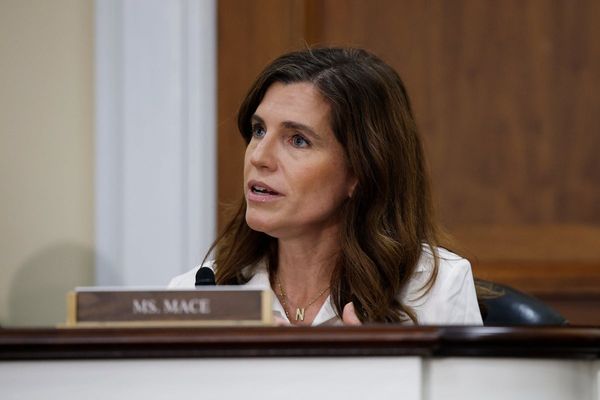
Editor’s note: "How to Retire Early" is part one of an ongoing series focused on early retirement and the FIRE (Financial Independence, Retire Early) movement. To see all early retirement articles, jump to the end.
It's not always the patient plodders who grasp how to retire early. Good things often come to those who wait, yet sometimes, better things come to those who act — like mustering the nerve to pursue a soulmate or secure an early retirement.
Amid discussions by some members of Congress and finance leaders to raise the Social Security retirement age, many intrepid savers aim to ditch the 9-to-5 grind well ahead of schedule. For them, 40 is the new 65.
This aspiration resonates strongly with younger workers. A Qualtrics survey of 3,000 working Americans revealed that nearly a quarter of younger Millennials and Gen Z workers plan to retire early, with 41% of these hopeful retirees targeting to bow out by age 50.
How to retire early
Fueling this trend to quit while still relatively young? The FIRE (Financial Independence, Retire Early) movement, where influencers often document their journeys of retiring in their 30s and 40s. But, since early retirement is still far from the norm, many misunderstandings persist about it.
The truth is, the process is simple but not easy. If you’re eager to accelerate your transition to life after work, here are seven key steps to retire early.
1. Set a high savings rate
Essentially, the higher the percentage of your income you save, the sooner you’ll be able to retire.
The average American, however, saves only about 4.6% of their earnings, a stark contrast to the 10-15% recommended by financial experts. T. Rowe Price’s analysis suggests that saving at the higher end of this range could help you accumulate 11 times your pre-retirement income by age 65.
Therefore, to retire early, this figure needs to be dramatically higher. FIRE enthusiasts often aim to save between 50 and 70% of their income, indicating that early retirement necessitates a profound shift in spending and saving habits for most.
To understand how your net worth and retirement savings compare to peers your age, read our articles on the average 401(k) balance by age and the average IRA balance by age. We also have tips on how to become a 401(k) millionaire.
2. Maximize your income
A lofty income isn’t a prerequisite for early retirement. Consider a survey by Empower that indicates Americans associate financial independence with an annual income of around $94,000.
However, the equation is straightforward: higher earnings facilitate greater savings.
You may be able to increase your income within your current career by working additional hours, seeking promotions or transitioning to a better-paying job. Beyond conventional employment, you can start a side hustle, look for freelance opportunities, or invest in assets that can generate passive income. You might consider tapping your home's value with a house hack, like converting your basement to an Airbnb apartment.
3. Control your spending
Creating a high savings stream also involves minimizing expenses.
Simple measures, such as reducing your streaming services, dining out less and canceling unused memberships, can significantly reduce discretionary spending.
For more substantial savings, consider larger expenses. The average household spends about $77,000 annually, of which a third goes to housing. So, exploring more affordable living arrangements or downsizing can offer greater financial relief. Kiplinger has assembled several tax strategies that may help you downsize and advice on whether you should pay off your mortgage before you retire.
While some may view such belt-tightening as restrictive, others embrace the simplicity and freedom of a minimalist lifestyle. This perspective is echoed by author and minimalist advocate Joshua Fields Millburn, who writes, “Now, before I spend money, I ask myself one question: Is this worth my freedom?”
4. Invest wisely
Any retirement would be highly difficult to achieve without investing. To retire early, you may need to max out your employer’s retirement plan, individual retirement accounts (IRAs), health savings accounts (HSAs), and any other investment vehicles you use.
Within your investment accounts, you might allocate funds to stocks, bonds, mutual funds and other investments.
Investing a high percentage of your income every month — and starting to do that as early as possible — enables substantial growth in your savings, making early retirement achievable.
5. Plan carefully
Early retirement poses some unique financial planning challenges, including greater longevity risk.
How much do you need to retire early? The Rule of 25 offers a simple answer. Estimate your annual retirement expenses and multiply by 25. For instance, needing $80,000 annually translates to a savings goal of $2 million, allowing for a 4% annual withdrawal while preserving your capital.
While a 4% withdrawal rate might work for some, it may not work for others. Particularly for retirements beginning in one’s 30s or 40s and lasting 50 years. As a Vanguard paper points out, the 4% rule was based on a 30-year horizon. The paper’s authors suggest early retirees consider a dynamic spending withdrawal strategy (also known as the "Go Live Your Life" rule). This allows investors to spend more when markets perform well and reduce spending when markets perform poorly, improving the chances your portfolio will survive retirement.
Another nugget of outdated retirement advice is the 80% rule, which states that you should aim to have enough savings to replace 80% of your pre-retirement income. This rule assumes you'll have a high level of spending for a few years before settling down to a cheaper lifestyle (without commuting to work, supporting adult children, etc.). Most retirement planners now recognize that this rule is antiquated, given longer, more active retirements. For those who are retiring early, it's particularly inept, as you'll likely want to maintain 90% to 100% of your pre-retirement income while you're young.
Taxes. Additionally, early retirees must consider tax implications, penalties on early withdrawals from certain accounts, and healthcare coverage before Medicare eligibility at 65. These factors necessitate meticulous planning and potentially finding alternative solutions. It's also a good idea to learn how your state taxes retirees. Finally, understanding your nest egg's tax properties is critical to your plan.
For public sector or government retirees, there are additional issues to consider. If you were a federal, state or local government employee, there's excellent news: You can now collect a public pension and full Social Security benefits under the Social Security Fairness Act (SSFA).
For early retirees with a family, getting a solid estate plan in place before you retire is a must. It's one thing to make sure your income and health needs are covered, but quite another if you have children or a spouse who will need support in the event of your death. There are ways to save money on estate planning, so don't put it off.
The safety net is failing. Finally, remember that Social Security and Medicare will run out of money in 2033 if Congress doesn't act. Although that sounds dire, beneficiaries will receive less money, not zero money. Long considered the "third rail" — an untouchable entitlement — it's unlikely that lawmakers will let the trust fund lapse entirely. Still, to save Social Security, they may raise the full retirement age or lower benefits to keep the funds solvent, which could affect your early retirement planning.
6. Decide what kind of FIRE style you are
Proponents of early retirement have developed several kinds of FIRE: coast, barista, lean and fat. While these are only general classifications, knowing your early retirement style could help you develop a plan that meets your needs.
Coast: Typically most appealing to "older" early retirees, this style emphasizes working as hard as you can until you meet your target retirement savings, or "magic number." Then you get to "coast" to retirement by reducing your savings rate or getting a less stressful position.
Barista: You start the party early by working a less-stressful or part-time job that offers health insurance. While we often think of baristas in this category, there are several high-paying side gigs for retirees that may include health insurance (such as teaching) or may allow you to negotiate for insurance benefits.
Lean: As the name suggests, this FIRE style emphasizes reducing your expenses and living a simple life while you are working and in retirement.
Fat: This style is for those who want a Gatsby retirement; you save as much as you can for a lavish retirement.
Want to learn more about FIRE styles? Take our quiz.
7. Make sure it's right for you
Exiting the rat race as swiftly as possible is a dream shared by many. However, retiring early can require significant sacrifices and a commitment to austerity that many may find too challenging. Especially when observing friends and family embracing more affluent lifestyles.
Beyond the financial hurdles, finding fulfillment and contentment is challenging. What will you do to occupy all that time? Are your plans in sync with your spouse or partner? If most of your friends are still working, will you be lonely in retirement?
Researchers have found that some successful early retirees experience “feelings of emptiness and anxiety” and find themselves in a “constant search for labels to define their identity and purpose.”
Fortunately, the path to an early retirement isn’t irreversible. You may always decide to "unretire," and there’s no penalty for saving more. You can still retire right on time — whenever that is.
Read More About Early Retirement
- Need a Reason to Retire Early? Consider These Eye-Opening Stats
- How to Retire at 40
- How to Retire at 50 or 55
- Retire Early for Adventure: Go Travel and Volunteer
- Will Retiring Early Make You Happier? It's Complicated
- Early Retirement Withdrawal Strategies for the Long Haul
- Five Early Retirement Mistakes to Avoid
- The Rule of 55: One Way to Fund Early Retirement
- A Sabbatical May Be a Smarter Move Than Early Retirement
- How SEPP 72(t) Can Help You Retire Early and Dodge Penalties
- How to Retire Early Due to Disability or Caretaking







